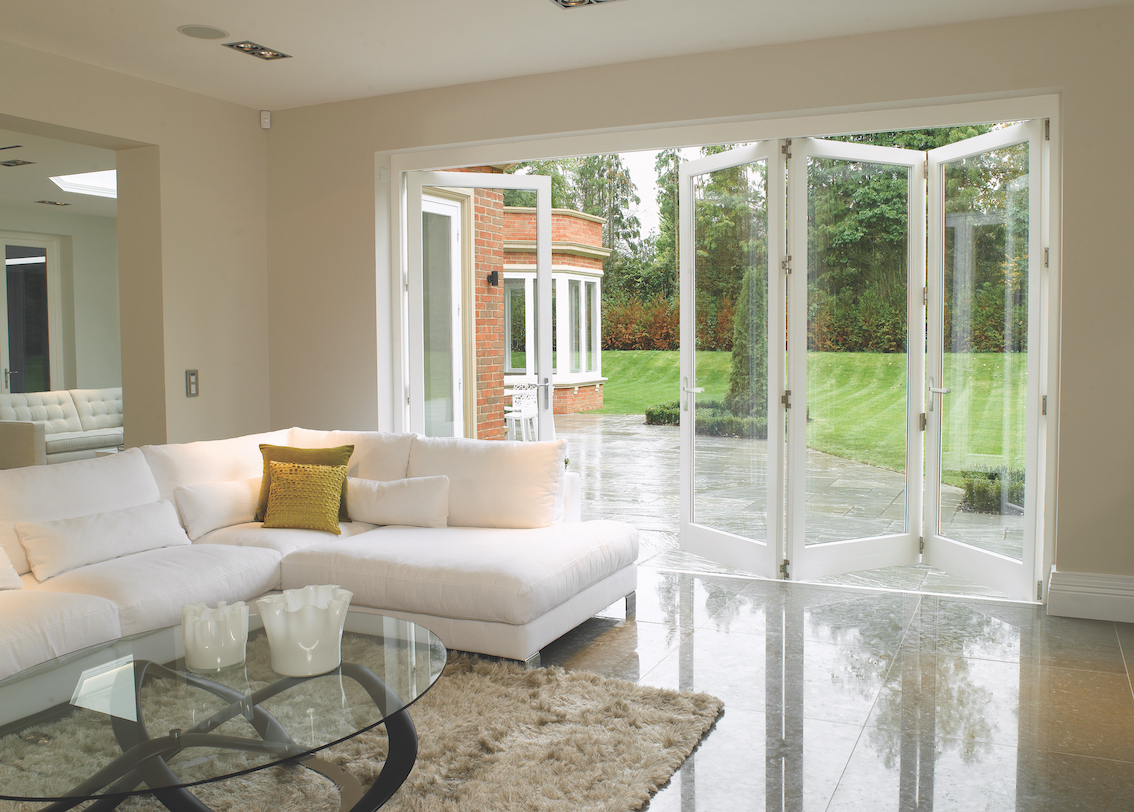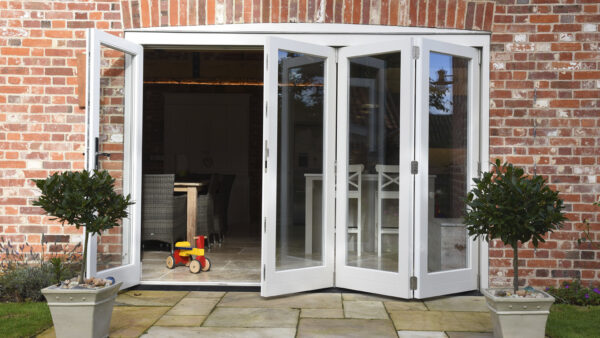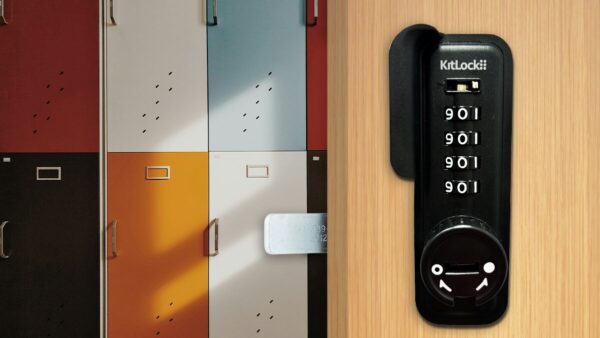
Both sliding and bi-fold doors present plenty of unique benefits to modern spaces, but what should decision makers consider when making a selection between the two? David Knollman reports.
Panoramic views, superior natural light and an improved flow between indoor and outdoor living – it’s clear why so many embrace sliding and bi-fold door applications in their living spaces. Yet, as many look to add value to their buildings, perhaps less clear is how to choose between the two door types when comparing them.

Sliding and folding door features are naturally aesthetic in design and are often used to enhance the style and layout of modern spaces. On the surface, the choice between sliding and bi-fold doors may seem like it hinges on personal preference only. In fact, there’s much more to consider than style, with the unique characteristics of both systems offering a wide range of benefits related to the door’s operation, placement and functionality. With that in mind, what should decision makers look out for when navigating the offerings associated with each door profile?
To fold or slide
Noticeably, the main difference between sliding and folding doors is in the way that they open and close. Bi-fold doors are typically made of several panels (usually between two and seven) and are connected by a series of hinges and a concealed track running along the floor or ceiling. When opened, bi-fold panels will fold back on themselves, concertina-style, revealing a complete opening and stacking together in the process. As a result, bi-fold doors are ideal for high-traffic areas where ease of access is important and there is a small amount of space available for panels to be stacked.

Sliding doors, on the other hand, are usually constructed of fewer and larger panels. As such, even when closed, a sliding door feature can provide clearer, uninterrupted views, which is fitting for those with access to year-round idyllic scenery. When operated, the panels of a sliding door will open, usually on the internal side of a fixed panel or wall. In doing so, users have a tidier opening, free of stacked panels that would otherwise take up space, which is useful in more compact areas of the home. When pressed for space at the side of the required opening, a ‘telescope’ opening can also be utilised, which consists of narrower panels that require less space at the side of the door.
Attention to detail
In any case, sliding and bi-fold door applications can offer superior functionality, visual appeal and space-saving capabilities when compared with traditional swing doors. These universal benefits have encouraged a growth of options in sliding and folding door systems, and alongside the different sizes, styles and configurations, it’s important to consider where a door may be placed and who may be using it.
With exterior doors for example, a bi-fold system with single open access may offer greater ease of access into the outdoors, regardless of setting. Bi-fold door applications can open outwards or inwards and may be applied to both large and small openings. Where fully open bi-fold doors are useful in larger settings or group gatherings, ‘traffic’ door configurations allow users to move through a single panel and remove the need to fold each panel back. In comparison, external sliding doors offer a straightforward solution for all requirements, whereby users may simply slide their door open to the amount that’s required at the time.

Inside, both folding and sliding door features can elevate the visual appearance of a building, with spaces made to feel more open and airier. Alternatively, during winter spells, spaces can become cozier by closing off entire rooms and prioritising warm working and living areas. Flexibility aside, daily use is another consideration to make when it comes to internal doors. Bi-fold and sliding systems are often lightweight in design and easy to use, with sliding doors safer to operate. With a sliding motion, users eliminate the need to open doors into the direction of foot traffic whilst also removing the potential finger trapping risks that come with slamming doors – making them a suitable option for buildings where children are present, especially when a soft-close device is utilised. For modern living areas where floorspace is limited, sliding doors can also save noticeable amounts of room, and as such, are often utilised in small flats, medical environments and student accommodation. To maximise space even further, pocket doors offer an additional benefit of disappearing into the wall when not required, freeing up valuable wall space that a standard sliding door application would normally require.
For those on the fence, it’s essential to review what may be best suited to your building by taking into account the whole picture and not only opting for a stylised approach. Sliding and folding doors can add value in a number of areas by sharing key advantages, several dissimilarities and a unique set of benefits. With that said, decision makers are urged to review these key considerations when making their choice – only then can one ensure their chosen hardware is practical in application.
David Knollman is business development manager at Brio UK








